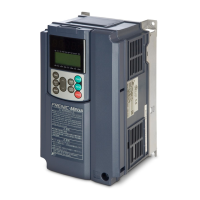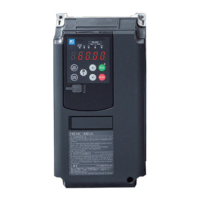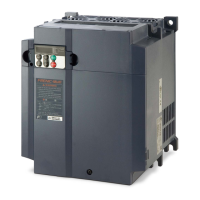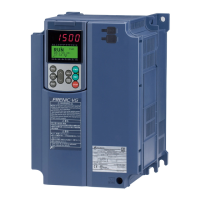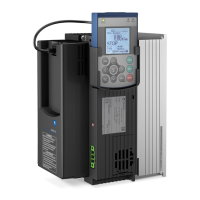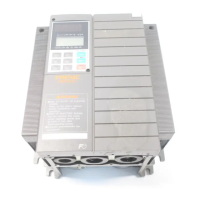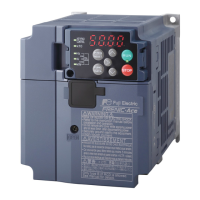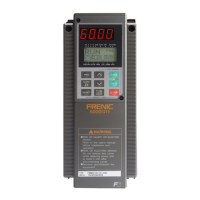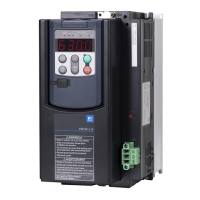5.4 Details of Function Codes
5-166
5.4.3 C codes (Control functions)
C01 to
C04
Jump Frequencies 1 to 3, Jump Frequencies (width)
In order to prevent resonance of the motor operation frequency and the fixed vibration frequency of the
machinery, up to three jump frequency bands can be set to the output frequency.
- When the set frequency is increased, if the set frequency is within the jump frequency band, the internal
set frequency is kept constant at the lower limit of the jump frequency. When the set frequency exceeds
the upper limit of the jump frequency band, the internal set frequency becomes the value of the set
frequency. When the set frequency is decreased, the situation will be reversed. See the figure on the
lower left.
- When two or more jump frequency bands overlap to each other, the minimum and maximum frequencies
become the lower limit and upper limit frequencies of the actual jump frequency band respectively. See
the figure on the lower right.
Fig. 5.4-76
Jump frequencies 1, 2 and 3 (C01, C02, and C03)
Sets the jump frequencies.
- Data setting range: 0.0 to 500.0 (Hz) (No jump occurs at 0.0.)
Jump frequency width (C04)
Sets the jump frequency width.
- Data setting range: 0.0 to 30.0 (Hz) (No jump occurs at 0.0.)
C05 to
C19
Multi-frequency1 to 15
These functions set multi-frequencies 1 to 15 that operate by switching several frequencies.
Switching between multi-frequencies 1 to 15 is possible by turning on/off the SS1, SS2, SS4 and SS8
terminal functions. It is necessary to assign the multi-frequency selection SS1, SS2, SS4, and SS8 (data = 0,
1, 2, and 3) to the digital input terminals (E01 to E09).
Multi-frequency 1 to 15 (C05 to C19)
- Data setting range: 0.00 to 500.0 (Hz)

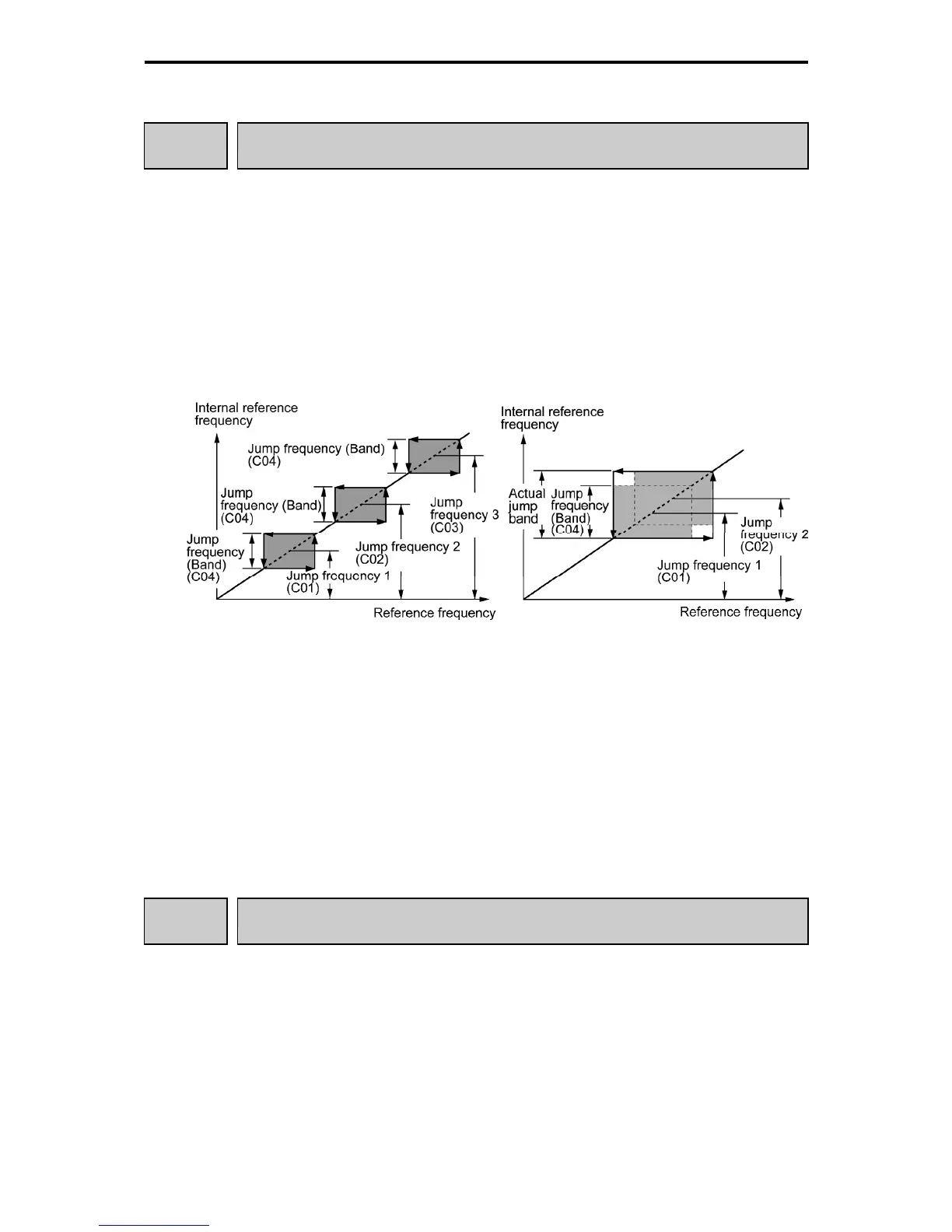